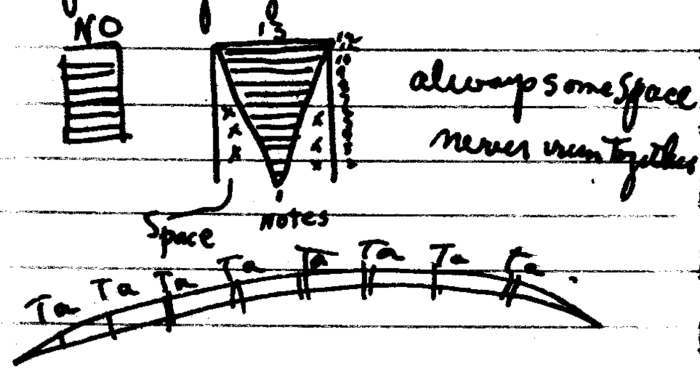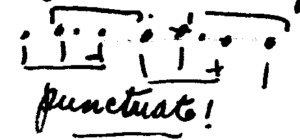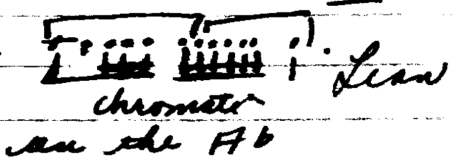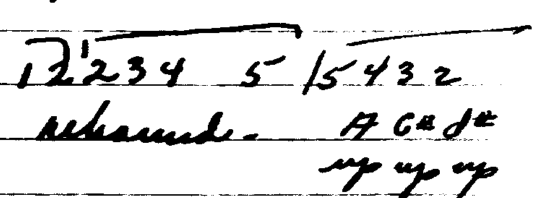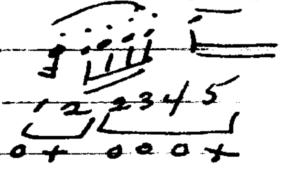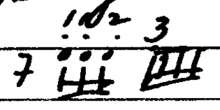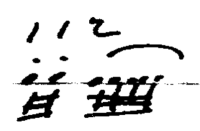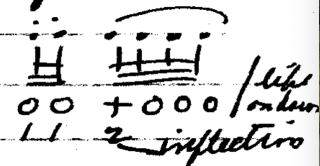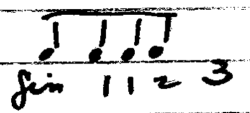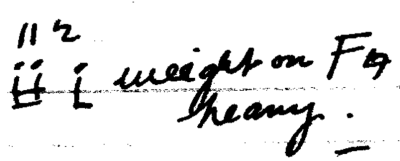Laila’s Lessons with Tabuteau 1943-44
First Year at the Curtis Institute of Music
Lesson 1: October 2, 1943
Your notes are not correctly distributed; you must punctuate! You are careless; you must practice with the metronome and articulate!
In balancing a reed: try playing low D to second-octave forked F to F♯ and to G; these must come into tune without forcing.
Your distribution of value is wrong.
Lesson 2: October 4, 1943
Barret Sonata 1: transpose the second movement up to G♭ major.
Barret: Grand Study 1
Lesson 3: October 11, 1943
Place the notes in the correct place on the wind. You must blow faster for upper notes. The speed of the wind must be accurate for each note in a series of notes.
Barret Sonata 1, 2nd movement: Play each note differently; gauge the length of each one. When you play an interval, do something with it.
Barret Grand Study 1: Transpose up to D♭ major. Barret is wonderful for articulation. The speed of the wind must not collapse.
Lesson 4: October 16, 1943
Barret Sonata 1, 3rd Movement: Transpose up to D♭ major.
Barret Sonata 2, 1st Movement: Transpose up to A♭ major.
Barret Grand Study 1: Transpose down to B major.
Barret Grand Study 2: As is.
Practice like hell! Practice intervals up and down. The speed of the wind must be the same before you go to the following note.
Lesson 5: October 25, 1943
Bad lesson. Repeat the assignment of Lesson 4.
Lesson 6: November 1, 1943
Barret Sonata 1, 3rd Movement: Trills are played more like a mordent [for Tabuteau this means two grace notes before the beat]. Don’t pronounce the final note of the phrase at the bottom of page 117.
Barret Grand Study 1:
Measure 1: C must be louder than low E. Play the octave E short; it resolves to D. (E is up, D is down).
Measure 9: The speed on octave C must be twice that of middle C (physics of the oboe). Give more: you don’t travel enough. There is no drive.
Measures 17-18: At forte to sudden piano, up to down is done by a change of embouchure and increase in the speed of the wind. Play with more speed on the down.
Story of the Rolls Royce: You step on the starter, the accelerator hearing loud and soft, but the car is not in gear, so you don’t go anywhere. Even though you step on the gas you don’t travel.
There are violinists who have the left hand of a virtuoso but no bow arm! Eugène Ysaÿe had that. It’s not only that you must be careful; perfection is like the point of a paradiddle. It is easy to hit all around it.
Barret Sonata 2, 1st Movement: transpose up to A♭.
Barret Grand Study 2: Transpose up to B♭ minor.
Barret Grand Study 3: Practice long tones.
Woodwind Ensemble: November 4, 1943
Space and gauge the notes:
Practice the following; you should have 25 gradations:
2-1, 2-1, 2-1
3-2, 3-2, 3-2
4-3, 4-3, 4-3
5-4, 5-4, 5-4
6-5, 6-5, 6-5
7-6, 7-6, 7-6
An increase of wind speed is like a wheel: the wheel stays the same size but revolves faster. If you force the wind through no larger space than the aperture of a reed, a natural vibrato will result. As the lips become freer and the wind faster, the wind will vibrate and carry itself forward.
You cannot hit 13 or 17 etc. in gradations, unless you start with a 13 embouchure pressure; so you can relax.
In crescendo, the wheel gets bigger, not faster.
There is a rebound in phrasing.
Lesson 7: November 15, 1943
Barret Grand Study 3: transpose down to D♭ major.
Practice long tones more. You don’t blow correctly. You need more speed of the wind on the upper notes. Play with the pressure of the wind. Have the pressure there before you attack.
Lesson 8: November 22, 1943
Barret Sonata 2:
2nd Movement: Transpose up to B major.
3rd Movement: Transpose down to G♭ major.
Barret Grand Study 3: Transpose up to E♭ major. Be aware of the distribution of values. Change the direction of the wind. Do something with intervals: give them their musical feeling:
You must turn the direction mentally. In the mind:
Be alert. Not bad but you could do much better.
Barret Sonata 2, 2nd Movement Lento (Page 124):
Measure 9: Increase each group.
Measure 14: Punctuate!
Measures 15-16:
Measure 17: Don’t play everything on one jet of air.
Measure 25: Lean on the dot on B♭.
Measure 30: Lean on the A♭:
Measure 34: Lean on the dot again.
Measures 64-65:
Barret Sonata 2, 3rd Movement Rondo:
Measure 1: More weight on the dotted 16th
Measure 2: Don’t rush the 8ths, and play the accents.
Measure 9: Make the grace note definite.
Measure 32:
Measures 34-35: Legato and smooth.
Measures 75-76: Don’t dwindle, increase:
Measures 109-116: Legato: don’t play restlessly; play smoothly and even. Don’t hurry, play measured.
Lesson 9: December 6, 1943
Handel Oboe Concerto in G Minor
1st Movement: Don’t drag.
Measure 6-7: On nothing, soft.
Measure 10: Must move.
Measures 12-13: The cadence is important, you must finish.
Measure 17: Forked F on the last quarter note.
Measure 21: Punctuate between C♯ and A.
Measure 24: Full F♯ to G.
Measure 25: Sudden pianissimo.
2nd Movement Allegro: Play all 16ths evenly and smoothly.
Measure 1: Space!
Measures 8-9: Full to D, then piano.
Measure 11: Crescendo.
Measure 12: Cadence, no ritardando; accent B♭; F♯ is up.
Measure 14: The first 8th note is nothing; careful on B♭ to high B♭.
3rd Movement Sarabande: take your time, play softly.
Lesson 10: December 13, 1943
Handel Oboe Concerto in G Minor
4th Movement: Final cadence: hit each note.
Barret Sonata 2, 3rd Movement Rondo: Play the triplets quickly and leave space; make a crescendo.
Barret Grand Study 3: Put space before the trill. Trill G♯-A with the little finger. Be careful with the intervals in the middle section; hold the tempo.
Lesson 11: December 21, 1943 (at Curtis instead of Studio)
Barret Grand Study 4: Transpose down to G♭ major.
Barret Sonata 3, 1st Movement; Transpose up to E major.
Sellner Duo 1, 1st Movement:
Measure 8: Don’t come down on the second note like a hammer;
Measure 46: Make the 16ths even.
Lesson 12: January 11, 1944
Barret Grand Study 5: Transpose down a whole step to D♭ major.
Sellner Duo 2
Barret Grand Study 4: Push on the notes; bear down more. At subito piano play a block away and be careful with the articulation!
Lesson 13: January 24, 1944
Barret Sonata 3: Transpose up to E major
1st Movement:
Measure 1: Lean on A natural, keep the line up by noting the relation of every note to another.
Measure 14: Your staccato notes are too long.
Measure 28: D up then up-up and down on G♭ at the barline.
Measure 37: The 8th note B♭ is up; articulate with the wind.
2nd Movement Lento:
Measure 7: Increase the wind on E♭, but take high C pianissimo and swell; don’t collapse on the turn, crescendo.
Measure 24: The last 16th must be up; make space before the grace notes.
Barret Grand Study 5: Measures 47-48: C-G-E: play E on the up of the G; then regarding C-G-E-C, the two cells are to be played:
Change your embouchure in order to get a different tone.
Lesson 14: January 31, 1944
Barret Sonata 3, Rondo
Barret Grand Study 6: Transpose up to C♯ minor
Lesson 15: January 31, 1944
Barret Grand Study 7
Barret Sonata 3, Rondo: Transpose down to D major
Lesson 16: February 15, 1944
Must find cellist [perhaps for playing the Barret Sonata 3]
Lesson 17: February 22, 1944
Barret Grand Study 7: Transpose up to F♯ minor
Barret Sonata 4, 1st Movement: Transpose up to B♭ major
Barret Grand Study 8: Prepare
Find and practice individual cells, then put these together. Do not play on one line like a monologue. Utilize question and answer. Don’t blow into the reed: blow at the bridge of your nose between the eyes for control.
Barret Sonata 4, 1st Movement:
Measure 5: Scale each note; E not too long: up; D♯ longer: up; D longer: up; all three are at diminuendo and heading for down on the barline.
Measure 13: The D♯ is important. Judge how full you can start the A by how far down you have to go down on the E.
Measures 16-17: Punctuate, use a different wind speed. Don’t breathe but break it.
Measure 31: Don’t hold the B too long: use a different wind speed.
Barret Grand Study 8: Utilize question and answer and spacing. Make the 32nds short and play the two 16ths before the eighth note faster.
Lesson 18: February 29, 1944
Practice up-up-up-up |down on one note and vice versa.
Barret Grand Study 8: Transpose up to G♭ major
Barret Grand Study 9
Good playing is a combination of six or seven things. Find the line.
Lesson 19: March 6, 1944
[No information was entered by Laila]
Lesson 20: March 13, 1944
Barret Grand Study 9: Wait before the trills; play them on the beat.
Practice long tones and intervals. If you are stale, there is a reason. If you want a thing to sound off the beat, play heavy on the next one. Don’t move your embouchure when you articulate. Put more reed in and out for high and low notes respectively. You must shape your wind. (You play all on one kind of wind.) You must stop the wind between phrases.
Lesson 21: March 21, 1944
Barret Sonata 4, 2nd Movement, Andante:
Measure 3: G♯ to A not too loud so you can go up on C-D-E.
Measure 6: Stop the wind; even though it is legato, don’t play on the same wind.
Measure 11: Lean on A♯, then C♯, and F♯: the higher you go on F♯, the better you can play the low B.
Measures 12-13: High A to G♯: more on the G♯; it is not necessary to accent the F♯ as merely descending does it; on the three 16ths and dotted 8th: up-up-up-down and very pianissimo.
Measures 19-21: The 32nd note is the highest note on the circle [sequence]; change the wind after E; keep up the intensity to go from A to B in measure 21.
Measure 23:
The C♯ must be higher [up], must not go down. A fundamental principal in diminuendo: it goes up and it should be lighter than air, like smoke rising to nothing.
Measure 24: The two G♯s: up-up (higher).
Measures 28-29: Make a two-measure exercise in all keys: up-up-down, up-up-down, up-up-down, up-up-down.
Measure 31: The five notes following E are all on up.
Measures 43-45: Make an exercise of the sequence: start on low C and go up.
Measure 55: Regarding low B to F♯: never force to the higher note in an interval; always utilize crescendo-wind to it. Practice making the phrasing even, though slurred. It must sound different.
There are two kinds of people: those who feel even though they don’t know what they do. And there are those who have to think and practice what to do. Yet this second one had no talent and had to learn that way, and you must do the same.
You don’t do enough. But it is rare and difficult to balance it exactly: not too much, just enough. That is what you must try to do.
Barret Grand Study 10: Play smoothly. Attacks not sudden; drive and press into it.
Measure 12: Practice 0 + [up-down] on the scale; then 0-0-0-+ and put it together; there must be no break; play the down a little heavier:
Measure 30-31: up-up-up |down and 5-4-3 | 2.
Measure 31: Build the low note to the upper note in each interval. Don’t pinch with the lips but press with the fingers of the left hand, especially the first finger. Change the tone quality, like on a violin; change the tone by pressure of the left hand.
Measure 48: D♭ finish. Play the coda, ti-ta-ti-ta etc., heavy and balanced. Play higher before the last note and fight to keep the low D♭. Every note is a battle.
Lesson 22: April 3, 1944
[Barret Grand Study 11]
Take more lower lip.
Lesson 23: April 11, 1944: In the Ludlow Building Studio
[Barret Sonata 4, 3rd Movement:] Play the spirit of the piece, forget the notes. Right now, there is no feeling, no life!
Lesson 24: April 24, 1944
Barret Grand Study 12. Measure 1: Play the resolutions of si; you are not blowing when you articulate. Before the trills [in the Exposition and Recapitulation] play a short note (mordent); play this graceful and light (up and short). Play the octaves forward.
Barret Grand Study 13: beginning at measure 25, make each group of three 8th notes different and give more.
Barret Grand Study 14: Practice ta-ta-ta|ta. Take a breath: let the wind out while taking a breath, and go on.
Measure 15: Play the same for each group, but more:
Barret Grand Study 15: Practice different articulations: 32nd-dotted16th, and dotted 16th-32nd. Practice in different keys. Each group of eight 16ths is in a different place on the line.
Lesson 25: April 26, 1944
Barret Grand Study 12:
Measure 3: Make exercises out of little groups:
Measure 11: Third beat up in the circle [arc of the phrase].
Measure 12: Punctuate by separating the two 8th notes; make them full and play each on down. Then proceed as follows:
Measure 13: Change your embouchure between D and B; say ti on the trill. It must say something to be worth anything. You must feel in your lower lip and use the cushion.
Measure 17: Staccato and 1-1-2 / up-up-down. The higher you go, the more you can give on down. For staccato, make it short by using the tip of the tongue. Make mice-noise.
Playing must have direction: up-up-up-down. Practice scales:
- +-0-0-0-+: down-up-up-up-down
- +-+-0-0-+: down-down-up-up-down
- +-+-+-0-+: down-down-down-up-down
Practice for the up and down inflections this coming summer.
Sellner Duo 2:
Measure 29:
Measure 32:
You play like a string of spaghetti! Where is your heart? You must feel: scale your feelings; give more. Your playing is much too calculated: You are incomplete. Don’t think as much. You are using too much intellect.
Lesson 26: May 11, 1944
Barret Grand Study 15, Lower voice: Emphasize the accent in the melody and sing the upper notes; make the lower ones softer. Your arms are dead: they must be a part of playing. Use your lower lip more and feel in it. Use it against the teeth especially to make the high notes clear. Upper voice: Change the quality of the high and low notes. Play dark, play brilliant.
Two accented 8th notes can be two different directions: up-down.
Barret Grand Study 16: make inflections but in tempo. Play everything in this study twice and with different articulations. You must get the notes so surely under your fingers that you can forget them. Concentrate on patterns, direction, etc. and then freedom within the form. Spirit, Music!
Maintain the pressure of wind when playing intervals.

